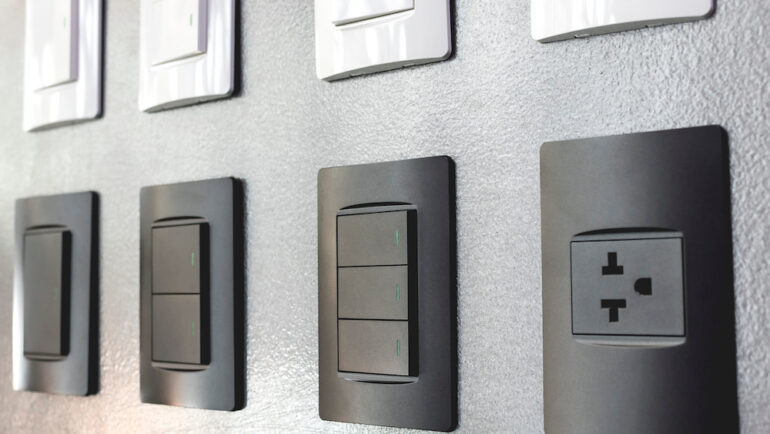The simple light switch has undergone a transformation over the years. Once a light switch merely turned lights on and off. Today, that simple switch has blossomed into switches that can dim lights, switches you control with remote, smart switches, and motion-activated switches.
Light switch basics
A basic light switch is a single-pole electrical circuit. A wire bearing an electrical load has an interruption in the form of a switch. A second wire grounds the power to the earth. When the switch is “open,” the power supply is not connected to turn on the light. When the switch is “closed,” the power wire is connected, and power flows to the light.
Your basic switch connection choices are a toggle switch that flips up or down and a rocker switch that seesaws up or down.
Your expanded choices
Over the years, switch options have flourished. Today, you have the following choices:
- Three-way switches allow you to control a light fixture from two different locations. These are typically found at each end of a hallway or at the top and bottom of stairs. Either switch can operate the light.
- Dimmer switches turn lights on and off and allow you to control their brightness. There are three types of dimmer switches: a simple round dial you press to turn lights on or off and turn to modulate brightness; a rocker on/off switch with a discreet slider on the right to control brightness; and a small horizontal rocker switch for on/off with an up/down slider brightness control above it.
- Remote control on/off and dimmer switches allow you to change lighting from across the room with a handheld device.
- A multi-circuit control switch allows you to operate more than one light fixture from a single wall-mounted switch panel. Multiple switches allow you to turn two or more light fixtures on and off and control their brightness.
- Motion detector switches automatically turn lights on when someone walks into the room. A timer turns the lights off if no motion is detected after a prescribed amount of time. An up/down slider controls brightness.
- Smart switches allow you to program switches to turn lights on and off and sometimes dim them. You control these switches either through your home’s Wi-Fi or a hub or control device.
Does bulb type matter?
Dimmer switches can work with any bulb type: incandescent, fluorescent and LED. There aren’t many incandescent bulbs left, and they use more energy than fluorescent and LED. Converting to all LED bulbs saves a lot of money on your electric bill since LED bulbs use a small fraction of the power the other types require.
Related – Should I Switch to LED Light Bulbs?


